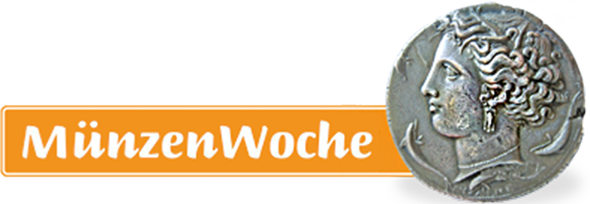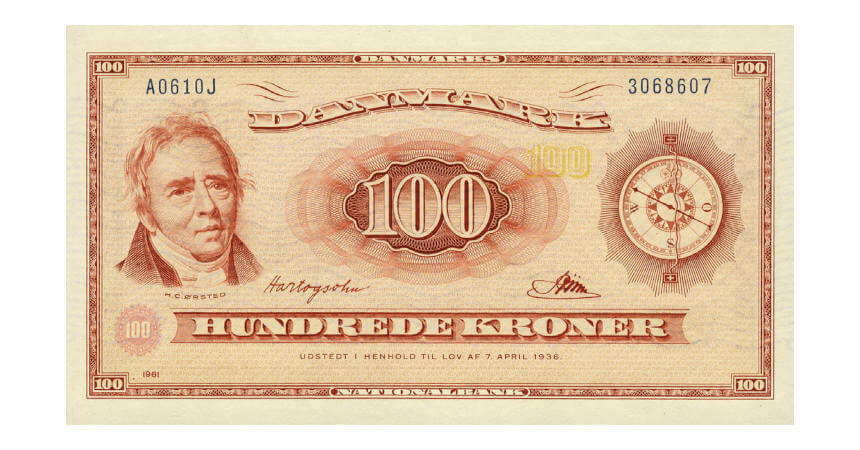National Bank of Denmark
Wenn es kein Logo gibt, wird diese Spalte einfach leer gelassen. Das Bild oben bitte löschen.
(Dieser Text wird nicht dargestellt.)
Havnegade 5
1093 Copenhagen K
Tel: +45 33 63 63 63
Denmark’s central bank, The National Bank of Denmark, opened its numismatic exhibition in August 2012 in the main lobby of its headquarters. Once two separate collections, the coin collection of the Royal Danish Mint and the banknote collection of the National Bank of Denmark are now combined into a single gallery with all explanatory text in Danish only.
Coins
The coins on display, numbering about 200, include coins minted after the establishment of Danmarks Nationalbank in 1818, even though Denmark’s first coin goes back to that minted by Sweyn Forkbeard (c. 995). This is a display of two coins of each type, displaying the obverse and reverse sides for all monarchs from Frederik VI (1808-1839) to the present with one exception: the 20-krone coins in gold of Christian X (1912-1947).
Other rare and valuable coins also on display include the Christian d’Or and Frederik d’Or before the introduction of the krone in 1875 and the 1819 speciedaler, which is particularly interesting, as it is the last Danish coin to include the Norwegian lion. Denmark had surrendered Norway to Sweden at the Congress of Vienna in 1814, and in 1819 King Frederik VI promised to remove the Norwegian lion from the Danish coat of arms.
Furthermore, the exhibit includes the complete collection of 2-kroner silver commemorative coins, first minted in 1888, marking the 25-year reign of Christian IX up to the 1958 final issue, the occasion of the 18th birthday of then-princess Margrethe (Queen since 1972).
Banknotes
The exhibition of banknotes shows all those issued by Danmarks Nationalbank since 1818, ending with the current series, approximately 100 in all. This includes examples of the first Danish banknotes issued by various authorities in the 18th century. Following the 1813 Danish State bankruptcy, the Rigsbank was set up to issue banknotes, and some of its banknotes are also on display. Due to a lack of confidence in the Rigsbank, it was replaced by Nationalbanken i Kjøbenhavn in 1818, whose notes were just like the Rigsbank’s, except that the name of the issuer had been changed.
Special Banknotes
A few special banknotes on display are: a 1-krone banknote issued at the time of World War I and a 2-krone banknote which was never put into circulation. There is a banknote shown used by the German Occupation forces in the early days of World War II, as well as a 1-krone banknote prepared by Danmarks Nationalbank in case there would be a shortage of coins but it never became necessary to put it into circulation.
Finally, the special banknotes used by the British forces in Denmark after the Liberation are shown. There is also a display of Faroese banknotes. The first of these was issued in 1940, when the war separated the Faroe Islands from Denmark proper. After the war it was decided that the Faroe Islands would retain their own banknotes, but of the same sizes and denominations as the Danish banknotes. The Royal Collection of Coins and Medals at the National Museum of Denmark (Nationalmuseet) is about 0.4 miles (700 m) away at Ny Vestergade 10, and a visit there is highly recommended.
This text was written by Howard M. Berlin and first published in his book Numismatourist in 2014.
You can order his numismatic guidebook at Amazon.
Howard M. Berlin has his own website.










